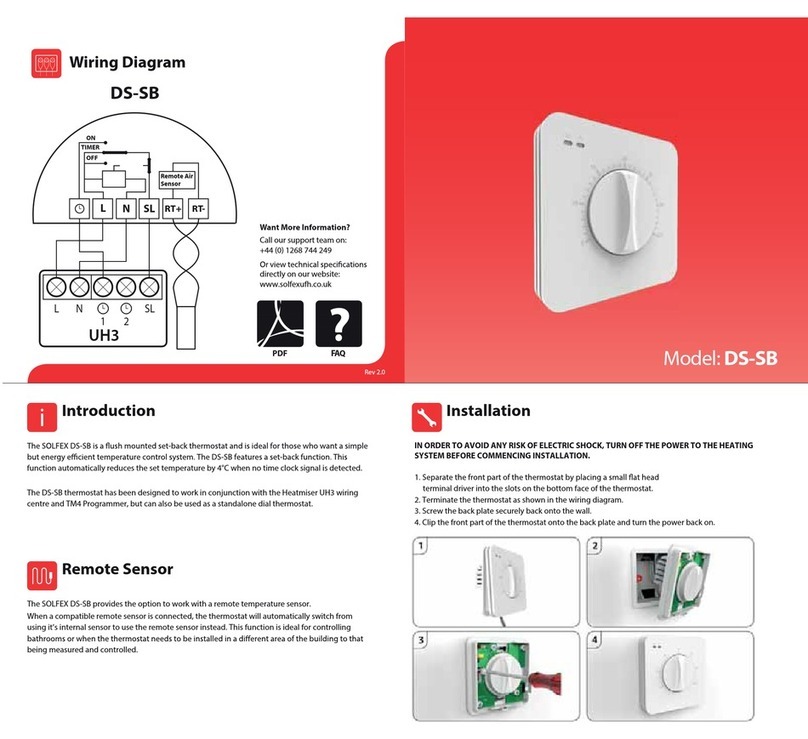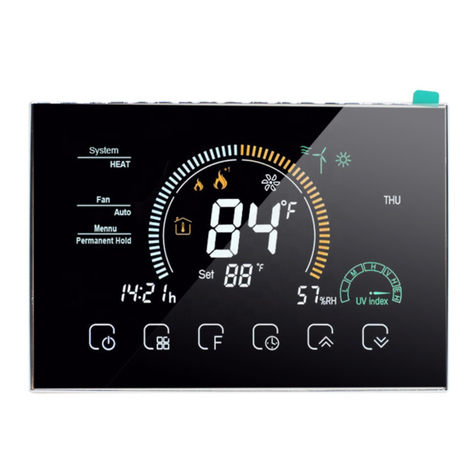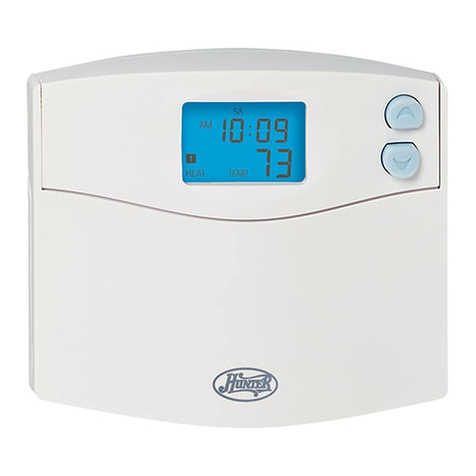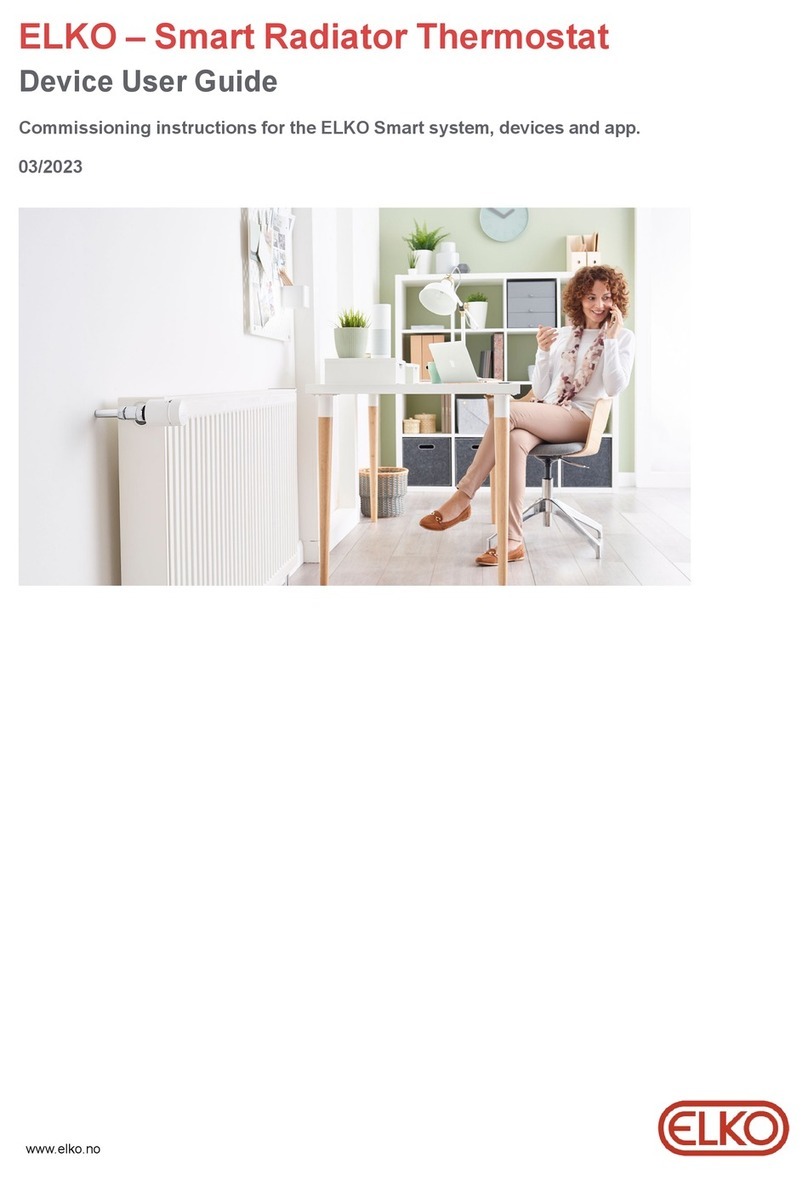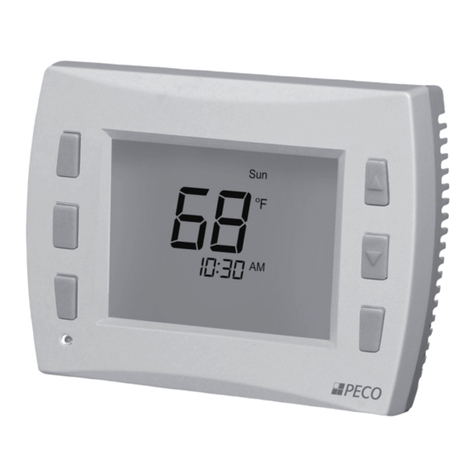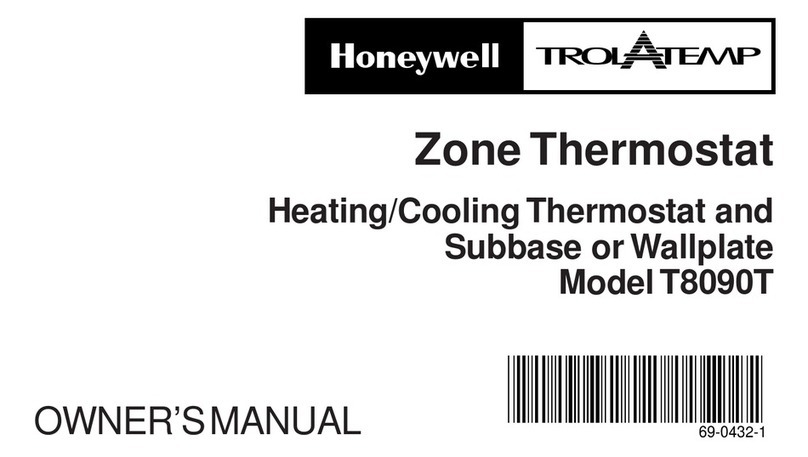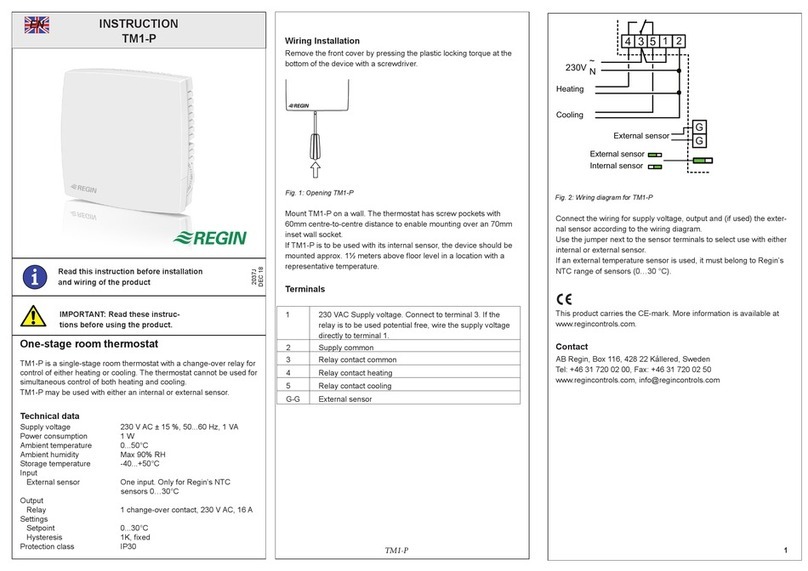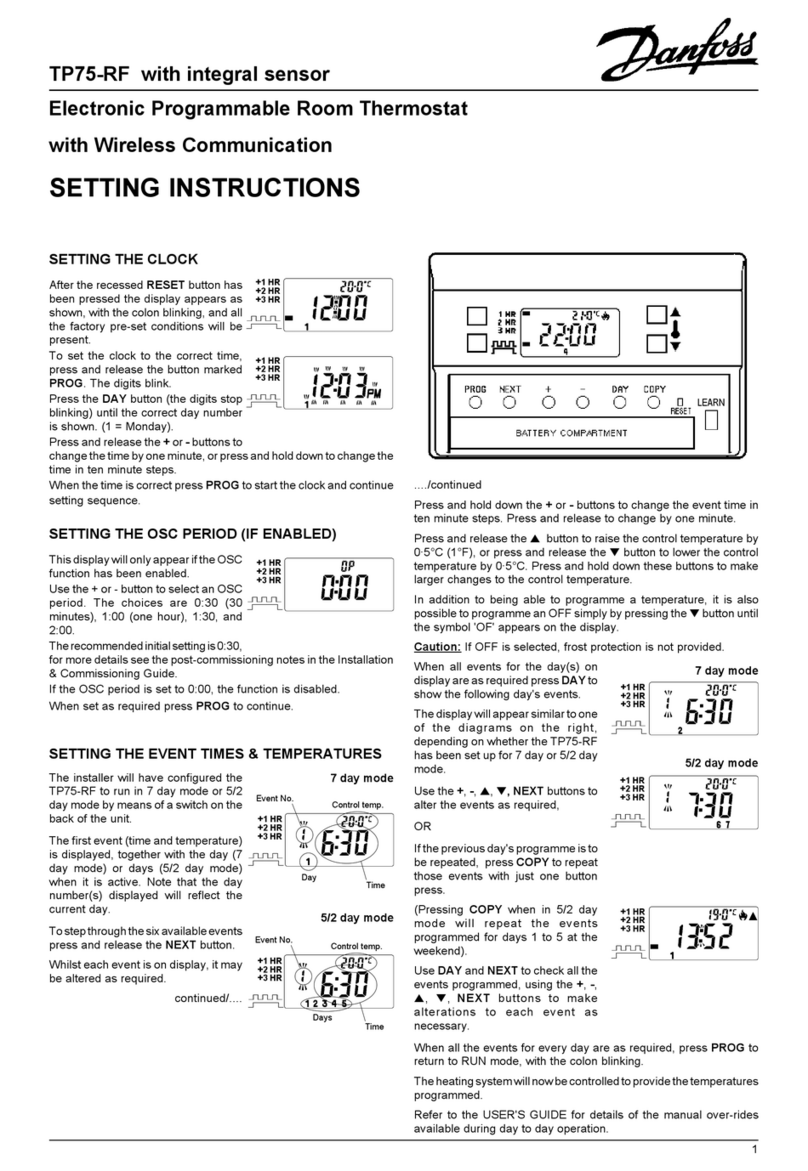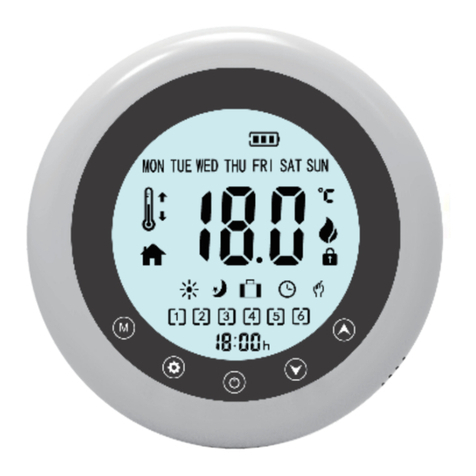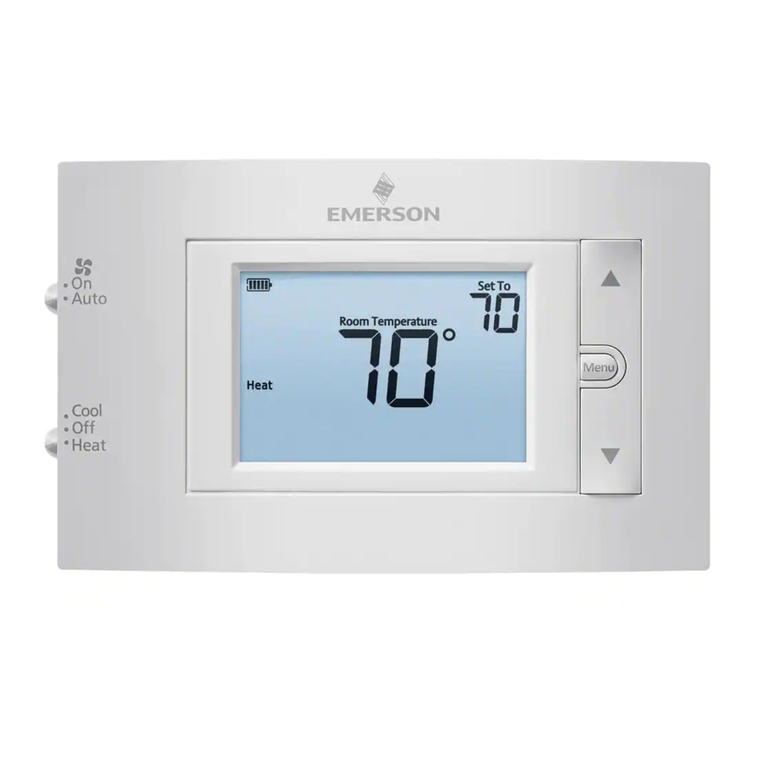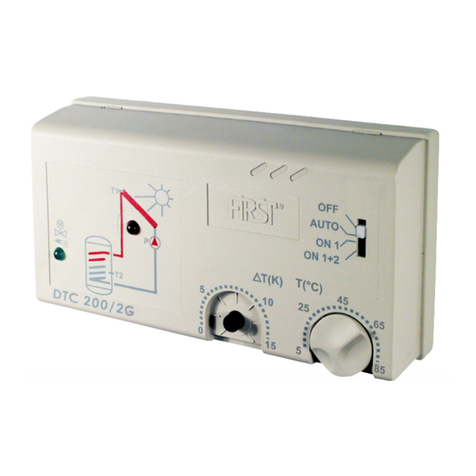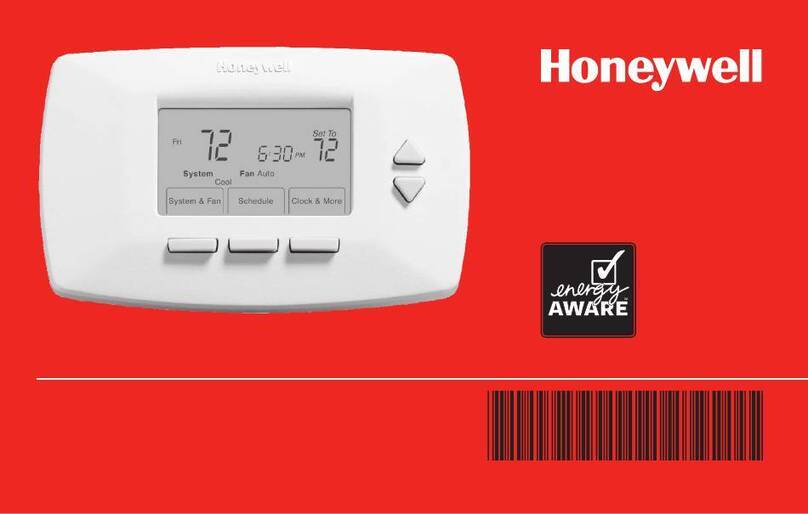Solfex UH8-RF User manual

MODEL: UH8-RF

2 3Wiring Centre MODEL: UFH8-RF
InstallationUH8-RF - Installation Manual
Description
The UH8-RF is an 8 Zone central wiring centre for use with SOLFEX
RF thermostats.
The UH8-RF can be used to control any actuator or valve which
requires a 230v AC signal. At the same time the UH8-RF oers the
ability to operate a boiler or other heat source through a volt free
output with changeover contacts, which gives you both a heat on
signal and a heat o signal.
Additional outputs designed for use with hot water or underoor
heating systems, are also included as standard. These are the pump
and valve outputs which would normally operate a manifold pump
or a manifold valve, and the H/W output which is used to send a
hot water on and hot water o signal.
Any output which is not needed can be ignored.
99 channel numbers are available allowing up to 99 dierent
UH8-RF wiring centres to be operated in close proximity. With 8
thermostats per wiring centre this gives you up to 792 distinct
heating zones.
When wiring directly to the heat source is not possible, a radio link
is provided to remotely enable a separate receiver, the RF-Switch.
Test switches are included for the installation engineer and further
options include creepage protection and pump delay.
Operation
Each RF thermostat used on this system can be congured as a
thermostat for either a radiator zone, underoor heating zone or in
combination mode, hot water and heating zone.
When the thermostat sends a signal for heating, the UH8-RF will
provide a 230v AC output on the paired zone and also bring on the
boiler/other heat source output. At the same time the UH8-RF can
send a radio signal to the RF-Switch.
If the thermostat is congured as an underoor heating zone, the
UH8-RF will also start the pump and valve outputs.
If an enable signal is received from a hot water time clock on the
system, only the H/W output will become active. This is a timed
output, which is normally fed to a cylinder thermostat, then to a valve,
but could also be used for towel rails. In either case the valve auxiliary
switch would operate the boiler/other heat source.
Other functions
Creepage
During hot weather the heating is not normally needed as often, this
means that valves and pumps that are not being used can seize and
refuse to operate. To prevent this, it is good practice to operate the
valve or pump once a day, the creepage function does this for you.
Once enabled the UH8-RF will operate each valve or pump for 1
minute, only if the outputs have not been operated by a thermostat,
within the preceding 24 hours. This function does not operate the
boiler output.
Pump Delay
Some valves or actuators can take more than a minute to open, if
the boiler and pump operate before the valve is open it can force a
boiler to go to lockout and stop operating. This function delays the
operation of the pump and boiler for 2 minutes to give the actuators
and valves time to open.
Engineers Test Switches
These switches allow the installation engineer to test the operation
of the valves, actuators, pumps hot water or boiler, without having to
install the thermostats.
The UH8-RF can be mounted directly to a wall using four screws or
alternatively, the unit can be DIN rail mounted.
When DIN Rail mounting, you rst need to insert the two clips
provided on the back of the UH8-RF, as shown in the image;
t On the back of the UH8-RF, position the clip in the middle and slide
down.
t Points A and B locate in the corresponding holes and lock into place.
t Locate the UH8-RF onto the DIN rail from the top.
t Pull the clip down and push the bottom of the UH8-RF onto the DIN rail.
t Releasing the clip will lock the UH8-RF in place on the DIN rail.
To remove the UH8-RF, pull both clips down and remove from the
DIN rail.
B
A
Insert clip here.
Then Slide down to lock in place.

4 5Wiring Centre MODEL: UFH8-RF
UH8-RF Wiring
Connections
Mains Supply
Power supply into the UH8-RF which should be fused at 5 amps
these connections are marked
L = live or phase 230v AC 50/60Hz
N = Neutral
E = Earth
Boiler
This is the main call for heat for the system, there are 3 connections;
C = common
NO = normally open
NC = normally closed
Electrically this is a two-way switch, whatever supply is placed on
the C connection, is fed to the NC connection when there is no call
for heat.
This is then switched to the NO connection when there is a call for
heat.
Most systems will use the common (C ) and normally open (NO)
connections.
Pump
Used for an underoor heating manifold pump.
Connections are clearly marked
L = live or phase 230v ac 50/60Hz
N = Neutral
E = Earth
When a thermostat congured as an under-oor heating zone
sends a call for heat to the UH8-RF, the live output will supply 230v
to the manifold pump.
It is recommended that this is fed through a high limit switch
placed on the heating manifold, to protect against mechanical
failure of the manifolds temperature control.
Valve
Used for an underoor heating manifold valve.
Connections are clearly marked
L = live or phase 230v ac 50/60Hz
N = Neutral
E = Earth
When a thermostat congured as an under-oor heating zone
sends a call for heat to the UH8-RF, the live output will supply 230v
to the manifold valve.
H/W
This output is used to control a hot water cylinder thermostat
C = common
NO = normally open
NC = normally closed
Electrically this is a two-way switch, whatever supply is placed on the
common connection, is fed to the NC connection when there is no
call for hot water. This is then switched to the NO connection when
there is a call for hot water.
Normally the NO connection would be wired to the hot water cylinder
thermostat, then from there to the hot water valve, the valve auxiliary
switch will then start the boiler/other heat source.
Most systems will use the common and normally open connections.
Zones 1…8
Zones outputs are clearly marked
L = live out to actuator or valve
N = neutral to actuator or valve
There are two connections live (L) and neutral (N), both terminals
marked L are the same and both terminals marked N are the same.
Each zone output is numbered, Zone 1 will respond to radio signals
from the thermostat paired to zone 1, Zone 2 output will respond to
thermostat numbered 2 etc.
Fuses
Each UH8-RF is protected by 3 fuses
Fuse 1. 800mA, 20mm anti-surge fuse, this fuse supplies and protects
the internal electronics.
Fuse 2. 5amp, 20mm anti-surge fuse, this fuse supplies power to all
230v outputs from the board it protects the zone, pump and valve
outputs.
Fuse 3. 2amp, 20mm anti-surge fuse, this fuse supplies power to the
pump and valve outputs, it protects the board from overloads caused
by jammed valves or seized pumps.
The UH8-RF should be tted as close as possible to the equipment it is controlling, but never within a metal enclosure, if this cannot be avoided an
extension antenna (EA1) must be tted and placed outside the metal enclosure.

6 7Wiring Centre MODEL: UFH8-RF
Wiring Diagram UH8-RF

8 9Wiring Centre MODEL: UFH8-RF
System Setup
DIP Switches
There is a 4 way dip switch responsible for 3 functions;
1. Pump Delay
2. Creepage Enable
3. Boiler RF test
4. Not used
In normal use these DIP switches can be ignored and should be left
in the o position.
DIP Switch 1
To enable the pump delay, put switch 1 to the ON position.
DIP Switch 2
To enable creepage protection, put switch 2 to the ON position.
Pairing to the RF-Switch
On the RF-Switch, press and hold the Boiler pairing button for 5
seconds.
The Boiler status LED will switch on.
Press and release the pairing button on the UH8-RF.
When the RF-Switch detects the pairing signal from the UH8-RF, the
Boiler LED will switch o, pairing complete.
DIP Switch 3
The Boiler RF test switch is used to test communications with the RF-
Switch receiver, used for remotely enabling the boiler.
The UH8-RF sends a repeating on/o signal to the RF-Switch receiver,
when installation is complete, switch number 3 MUST be in the OFF
position.
Put switch 3 to the ON position, the UH8-RF will send a repeating on/
o signal to the RF-Switch.
The Boiler LED on the RF-Switch will ash to indicate successful
communication.
Engineers test switches
These are a block of 12 dip switches, used to test each zone, boiler,
pump and HW outputs. To enable any output, put the switch in the
ON position.
When installation is complete all switches MUST be in the OFF
position.
Record the rooms names connected to each zone with the zone
number and record the channel number you have selected, you
will need this information when installing the thermostats.
That completes the setup process.
Step 2 is to congure the thermostats and will depend on which
model you have, please refer to the thermostat instruction manual.
Step 1
Each UH8-RF board has 2 rotary switches labeled CHANNEL NUMBER, this number is used to identify the board and must be set to a unique
number.
If you are only installing one UH8-RF, you would normally set the channel number to 01. On the rotary switches this would be 0 tens and 1 unit. If
you were installing 15 UH8-RF units, you would number them 01 to 15, fteen would be 1 tens and 5 Units.
You can choose any numbers you wish up to 99 but no 2 units within radio range can have the same number
Rating
Supply 230v AC 50HC
Power Consumption 7W
Max load on boiler output 3A 230v AC restive
Max load on H/W output 3A 230v AC restive
Max load for zone outputs 3A 230v AC restive
Max Total Load 5 Amps
Optional Accessories
RF-Switch (Remote Boiler Enable)
Boost (Repeater)
Extension Antenna (EA1)

10 11Wiring Centre MODEL: UFH8-RF
NotesSystem Conguration
....................................................................................................................................................................................................................................................................................................
....................................................................................................................................................................................................................................................................................................
....................................................................................................................................................................................................................................................................................................
....................................................................................................................................................................................................................................................................................................
....................................................................................................................................................................................................................................................................................................
....................................................................................................................................................................................................................................................................................................
....................................................................................................................................................................................................................................................................................................
....................................................................................................................................................................................................................................................................................................
....................................................................................................................................................................................................................................................................................................
....................................................................................................................................................................................................................................................................................................
....................................................................................................................................................................................................................................................................................................
....................................................................................................................................................................................................................................................................................................
....................................................................................................................................................................................................................................................................................................
....................................................................................................................................................................................................................................................................................................
....................................................................................................................................................................................................................................................................................................
....................................................................................................................................................................................................................................................................................................
....................................................................................................................................................................................................................................................................................................
....................................................................................................................................................................................................................................................................................................
....................................................................................................................................................................................................................................................................................................
....................................................................................................................................................................................................................................................................................................
....................................................................................................................................................................................................................................................................................................
....................................................................................................................................................................................................................................................................................................

Want More Information?
Call our support team on: +44 (0) 1268 744 249
cations directly on our website:
www.solfexufh.co.uk
Rev 1.0
Slimline
Products Commonly used with the UH8 wiring centre.
NeoStat DS-SB TM4
Table of contents
Other Solfex Thermostat manuals
Popular Thermostat manuals by other brands
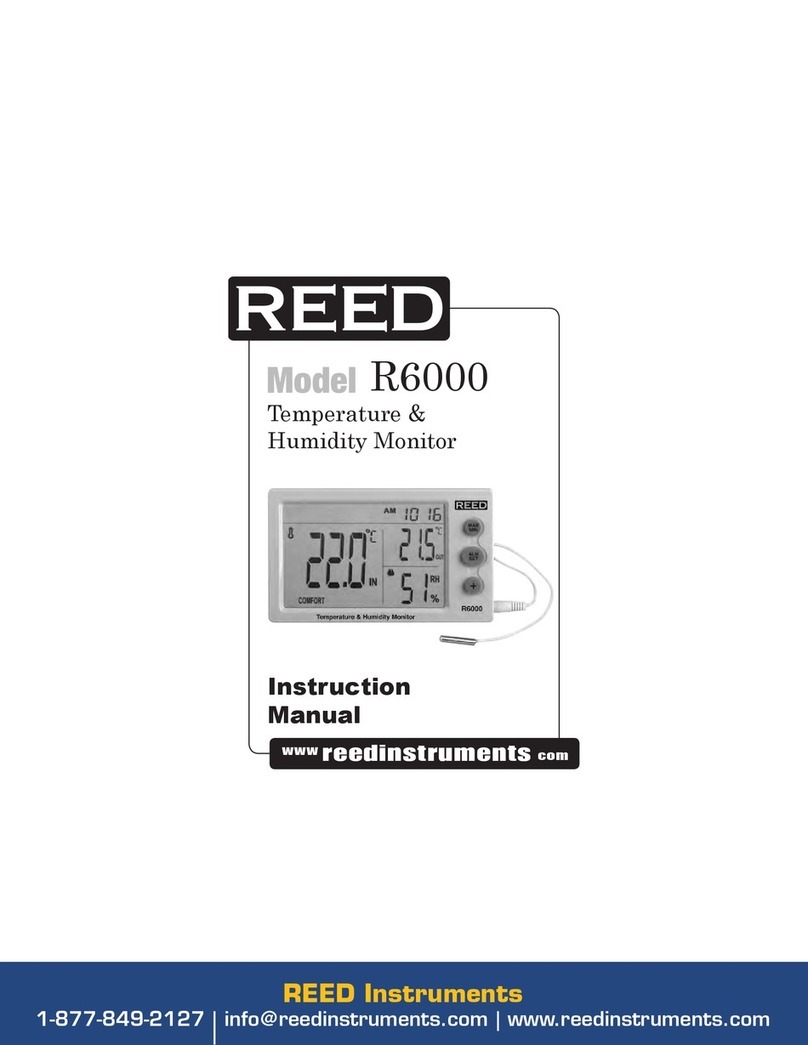
REED
REED R6000 instruction manual
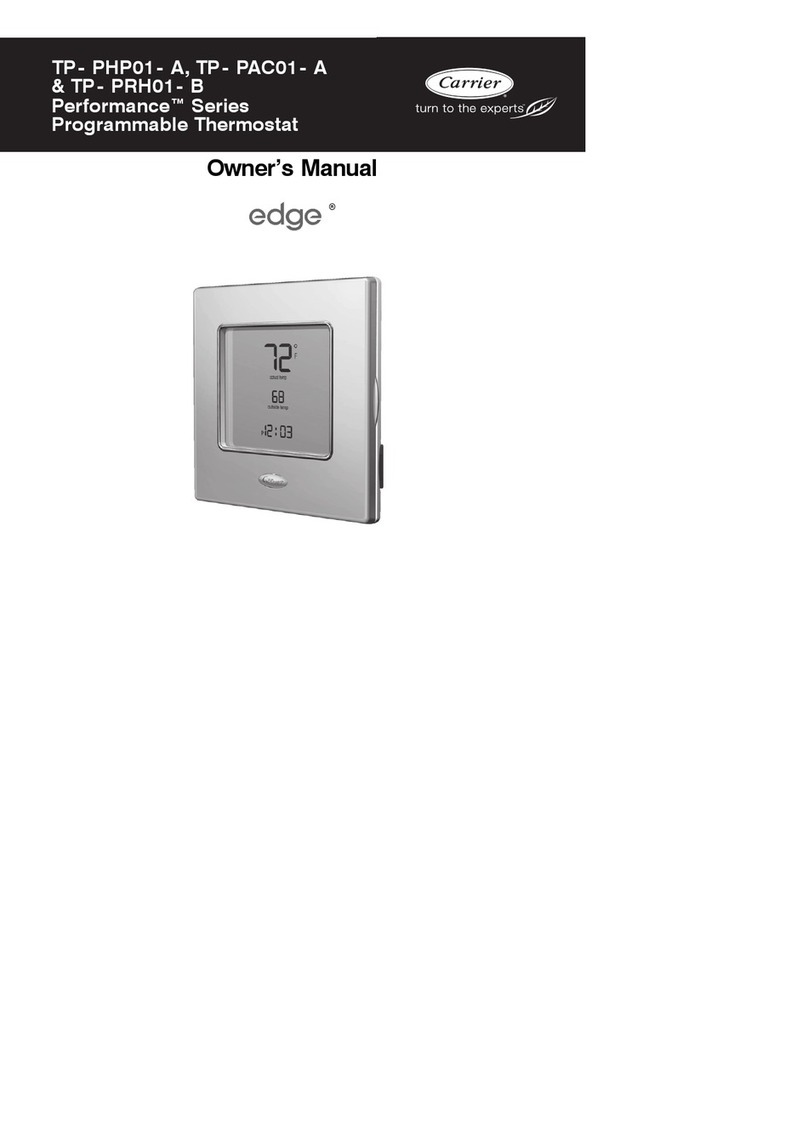
Carrier
Carrier TP-PHP01-A owner's manual
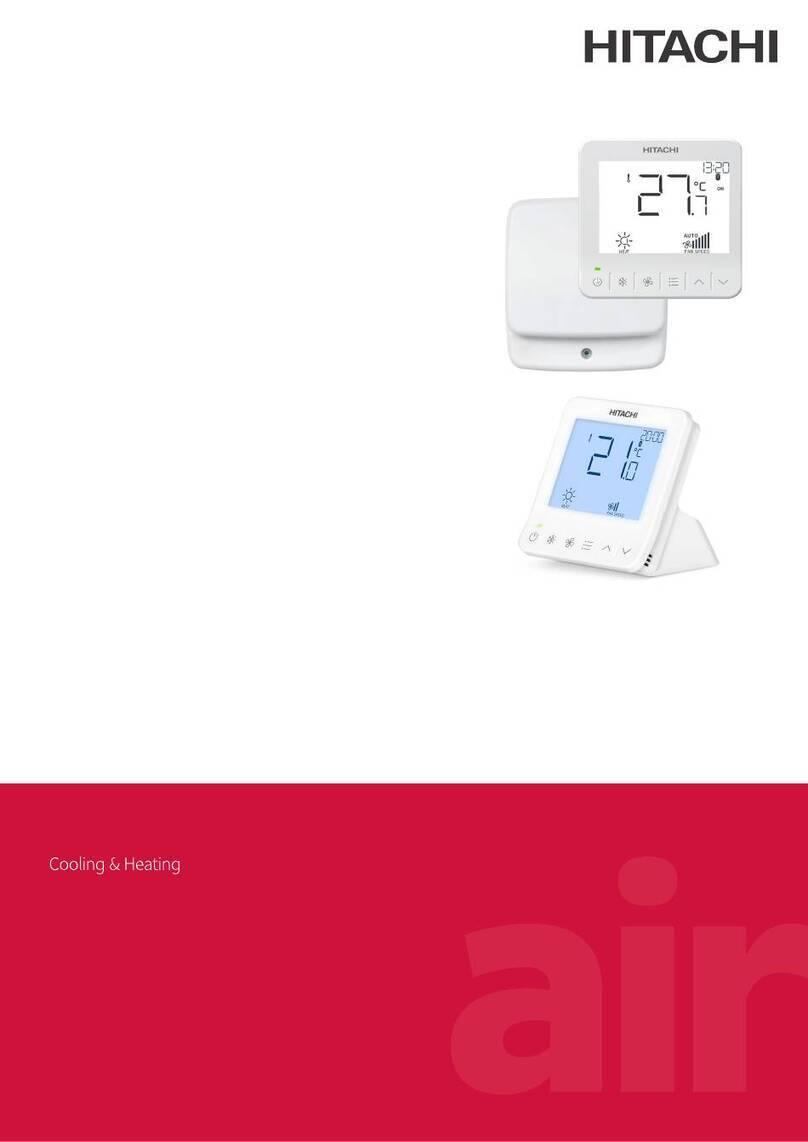
Hitachi
Hitachi YUTAKI PC-ARCHE Installation and operation manual
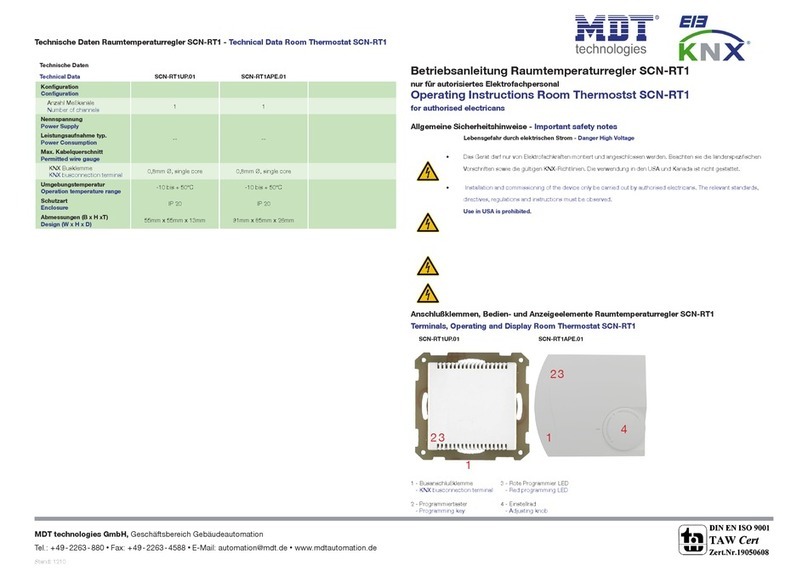
MDT Technologies
MDT Technologies SCN-RT1UP.01 operating instructions
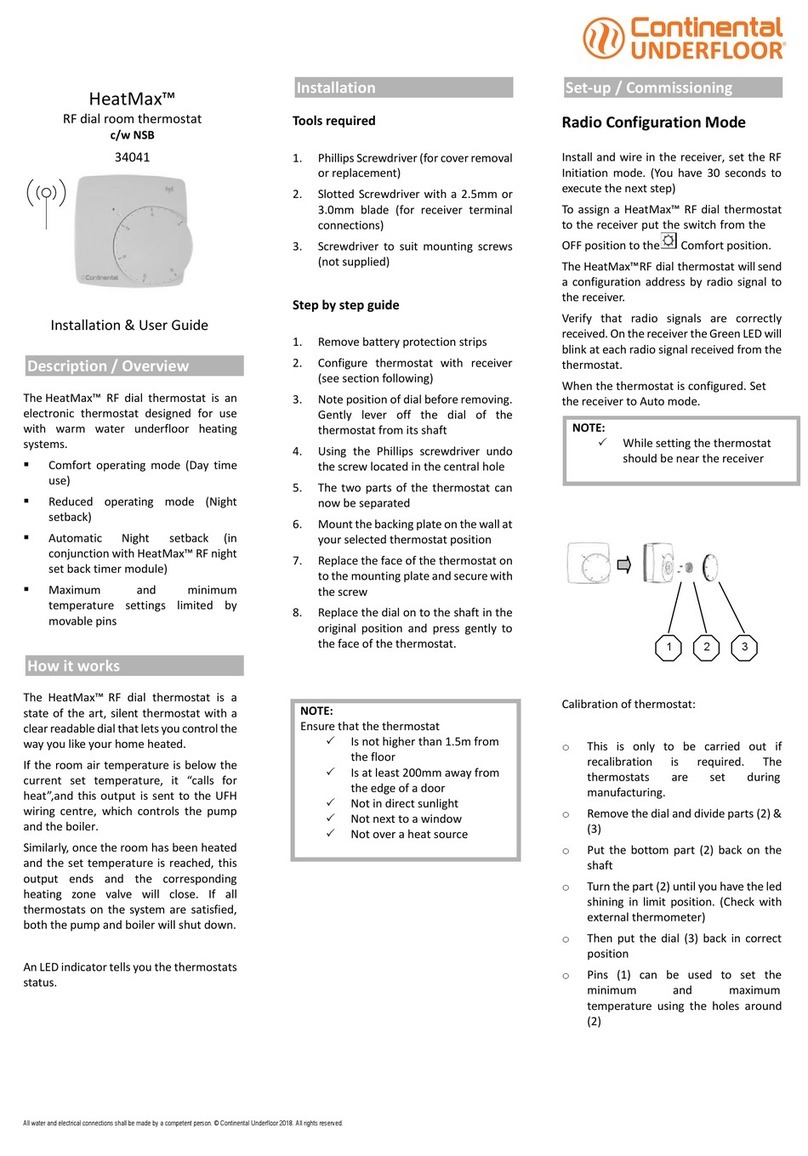
Continental Underfloor
Continental Underfloor HeatMax 34041 user guide

Sinope
Sinope TH1400ZB installation guide
